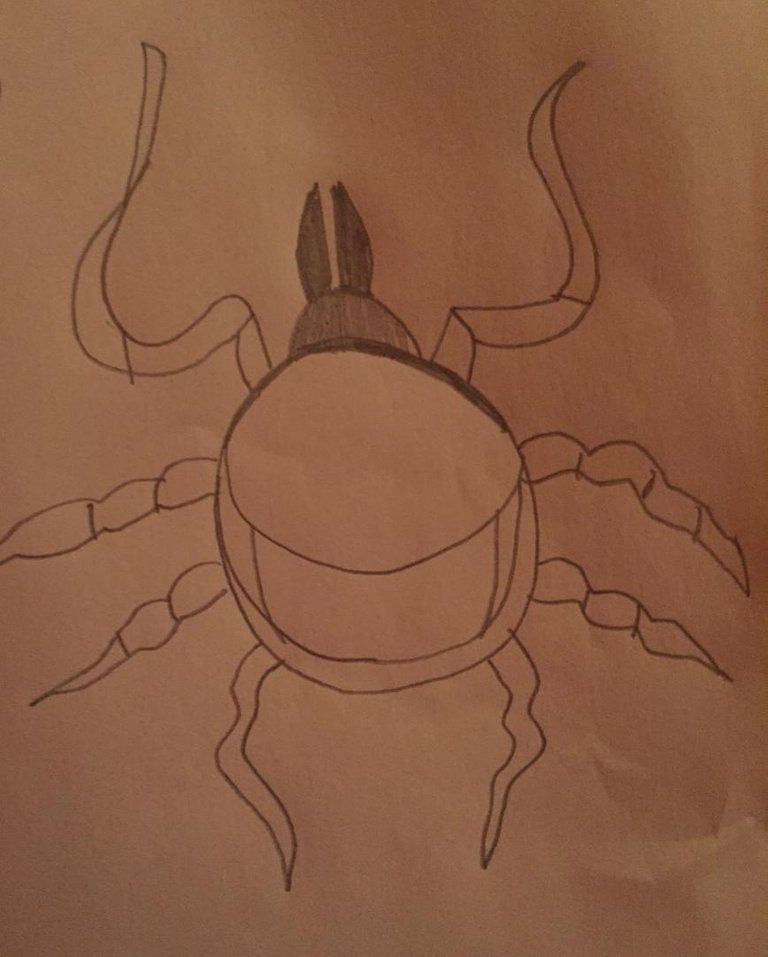Hola Hivers, reciban de mi parte un abrazo fraterno, cargado de energía positiva y deseos de salud óptima y bienestar, para ustedes y para todos quienes le rodean, esa es nuestra mayor riqueza, lo demás llega solo.
El día lunes se presenta, y con él inicia una semana que debemos afrontar con la mejor energía para cumplir todas nuestras metas.
El día de hoy les quiero escribir un poco sobre la ** Enfermedad de Lyme**

Antes que nada debo decir que soy un amante de los animales, sobretodo de los perros, de hecho no me imagino la vida sin ellos.
Los perros son fieles, cariñosos, amigables, compañeros y juguetones. Brindan su amor de forma incondicional, sin importar tu color de piel, tu posición social, tu orientación sexual o tu religión.
Pues bien, mi perro se llama Dino es un Samoyedo, que le encanta estar montando encima de mi, llenarme toda la ropa de pelos, y en ocasiones se monta en la cama para dormir alguna siesta.
Hoy mientas lo acariciaba me alarme pues, ¡Dino tenía una garrapata!. Después de llevarlo al veterinario, traía en mente hacer un post referente a este tema, y aunque el veterinario le mando un talco y coloco alguna inyección, normalmente los perritos son reservorios constante de las garrapatas.
Ahora sí, La Enfermedad de Lyme:
Es una enfermedad infecciosa bacteriana, que tiene como agente causal una espiroqueta denominada Borrelia Burgdorferi, comúnmente transmitida por garrapatas.

Dicho vector, transmite la bacteria en cuestión a través de su picada, diseminandose rápidamente de manera local, con un periodo de incubación de 4 a 33 días por lo general, para luego desarrollar signos y síntomas compatibles con la enfermedad de Lyme.
Nuestro organismo en manera de defensa, replicará con una potente respuesta inflamatoria. De igual forma y a pesar de la respuesta del sistema inmunitario mediado principalmente por el interferón Y, la bacteria de traslada a través de la sangre por diferentes partes del organismo.
Expuesto lo anterior, dicha afección produce daños a varios sistemas del organismo, sobretodo al sistema nervioso, cardiovascular, osteomio-articular y la piel principalmente.

Clínicamente esta enfermedad se divide en estadios:
Estadio I:
Denominado también, estadio local tiene como característica el eritema, habitualmente en el sitio donde la garrapata propinó la lesión. Está lesión es rojo de aspecto uniforme.
Al examen físico, la lesión se siente caliente, con signo de flogisis (enrrojecimiento, calor e inflamación).
Estadio II:
Ocurre la diseminacion de la enfermedad, las lesiones eritematosas pueden volverse multiformes, y se pueden encontrar en diferentes partes del cuerpo principalmente en pecho y espalda además suelen aparecer por si solas a las 4 semanas aproximadamente.
En esta fase los pacientes manifiestan síntomas como : Fiebre, adenopatías, dolor de cabeza, anorexia, escaalosfrios, dolor en músculos o huesos y adenopatías.
Es importante mencionar que en este estadio hasta un 20% de los pacientes pueden llegar a presentar alteraciones de carácter neurológico tipo meningitis, encefalitis, parálisis facial, entre otras.
Asimismo hasta un 4 % puede desarrollar alguna insuficiencia cardíaca.
Estadio III:
En esta etapa el individuo puede desarrollar una infección persistente, haciendo su aparición en meses, inclusive años.
En este estadio se pone de manifiesto las crisis de dolores articulares de forma intermitente,g generalmente desaparece con los años.
De igual manera, se debe mencionar el riesgo en embarazadas, ya que está bacteria puede atravesar la placenta y ocasionar la muerte del feto.
Diagnóstico:
El diagnóstico se debe hacer de forma integral tomando como referencia las condiciones de vida del paciente, si tiene mascotas, si vive en zonas rurales o algún indicio que nos haga pensar en esta enfermedad.
Dentro de este marco, debemos estar atentos a las manifestaciones de síntomas y signos del individuo en cuestión.
Los laboratorios dónde no puede faltar un hemograma, un cultivo y inmunoanalisis (enzimas) de ser necesario, no descartando tampoco los antígenos de Borrelia.
Tratamiento:
El tratamiento sera en dependencia de los daños ocasionado por la bacteria, sin embargo no puede faltar nunca el tratamiento antibiótico.

Cómo amante de los animales y como médico recomiendo siempre un constante cuidado de las mascotas, para que a abunde la salud de forma bidireccional.
Gracias.
Dios siempre de Cabrestero.
PD: Fotos y dibujos de mi propiedad.
ENGLISH:
Hello Hivers, receive from me a fraternal embrace, full of positive energy and wishes of optimal health and well-being for you and for all those around you, that is our greatest wealth, the rest comes on its own.
Monday comes, and with it begins a week that we must face with the best energy to meet all our goals.
Today I want to write a little bit about Lyme disease.
First of all I must say that I am an animal lover, especially dogs, in fact I can't imagine life without them.
Dogs are loyal, loving, friendly, companionable and playful. They give their love unconditionally, no matter your skin color, your social position, your sexual orientation or your religion.
Well, my dog's name is Dino, he is a Samoyed, he loves to ride on top of me, fill all my clothes with hair, and sometimes he rides on the bed to take a nap.
Today while I was petting him I was alarmed because Dino had a tick! After taking him to the vet, I had in mind to make a post about this topic, and although the vet gave him a talcum powder and gave him an injection, normally dogs are a constant reservoir of ticks.
It is a bacterial infectious disease, whose causal agent is a spirochete called Borrelia Burgdorferi, commonly transmitted by ticks.
This vector transmits the bacterium in question through its bite, spreading rapidly locally, with an incubation period of 4 to 33 days in general, to then develop signs and symptoms compatible with Lyme disease.
Our body, in defense, will respond with a powerful inflammatory response. Similarly, and despite the immune system response mediated mainly by interferon Y, the bacterium moves through the blood in different parts of the body.
In view of the above, this condition causes damage to several systems of the organism, mainly to the nervous, cardiovascular, osteomyo-articular and skin systems.
Clinically this disease is divided into stages:
Stage I:
Also called local stage, it is characterized by erythema, usually at the site where the tick has caused the lesion. This lesion is red and uniform in appearance.
On physical examination, the lesion feels warm, with signs of phlogisis (redness, warmth and swelling).
Stage II: ** Stage II: ** Stage II: ** Stage II: ** Stage II: ** Stage II: ** Stage II: ** Stage II: **
Spread of the disease occurs, the erythematous lesions can become multiform, and can be found in different parts of the body mainly on the chest and back and usually appear by themselves after about 4 weeks.
In this stage patients manifest symptoms such as: fever, lymphadenopathy, headache, anorexia, scales, pain in muscles or bones and lymphadenopathy.
It is important to mention that in this stage up to 20% of patients may present neurological alterations such as meningitis, encephalitis, facial paralysis, among others.
Also up to 4% may develop heart failure.
Stage III:
In this stage the individual may develop a persistent infection, making its appearance in months, even years.
In this stage, intermittent joint pain crises become evident, g generally disappears over the years.
Similarly, the risk in pregnant women should be mentioned, since this bacterium can cross the placenta and cause fetal death.
Diagnosis:
The diagnosis should be made in a comprehensive manner taking as a reference the patient's living conditions, if he/she has pets, if he/she lives in rural areas or any indication that makes us think of this disease.
Likewise, we must be attentive to the manifestations of symptoms and signs of the individual in question.
Laboratories where a hemogram, culture and immunoanalysis (enzymes) if necessary cannot be missing, not discarding Borrelia antigens either.
Treatment:
The treatment will depend on the damage caused by the bacterium, however, antibiotic treatment can never be absent.




